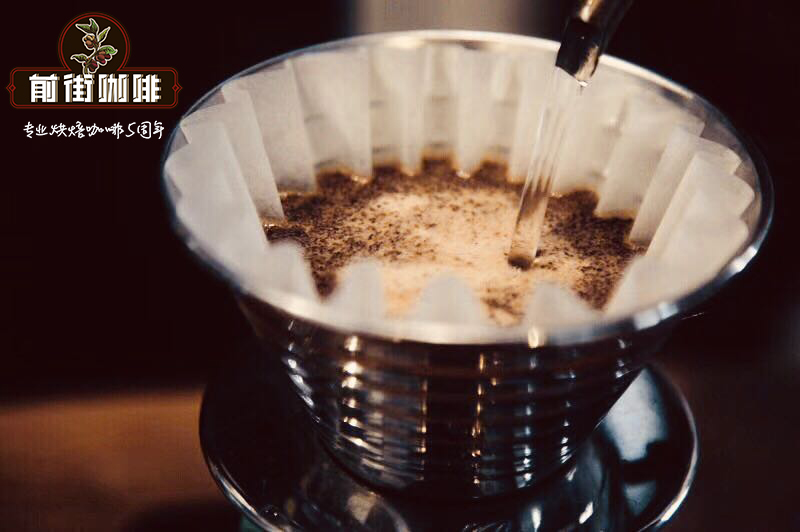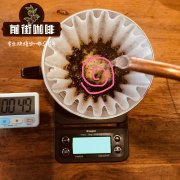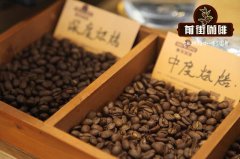Hand brewed Indian wind stained coffee parameter recommendations_Indian coffee how to drink_Indian coffee bean price report

Professional coffee knowledge exchange More coffee bean information Please pay attention to coffee workshop (Weixin Official Accounts cafe_style)
The "beautiful mistake" that happened to Indian coffee in those years created a special historical flavor of Monsooned coffee
In the early years, during the Great Maritime Period, Indian coffee beans had to be transported to Europe, and it took more than half a year to arrive. For a long time, they were in the humid and hot environment of the cabin, so the coffee beans gradually changed in flavor characteristics and color. After several months of sea breeze blowing, the beans turned yellow, and the acidity of the coffee itself also decreased a lot. The taste was very special.
Later, when the canal opened and the Industrial Revolution greatly shortened the voyage and improved the preservation conditions, many Europeans began to miss this kind of coffee under the influence of the sea breeze.
Today's air-soaked coffee is grown in processing plants on the west coast of India, facing west to meet the salty monsoon blowing from the southwest sea. It is time-consuming and labor-consuming to make air-soaked coffee. The air-soaked period is about 12 to 16 weeks.
[Indian monsoon] Due to its long-term exposure to humid monsoon blowing environment, its surface has a very beautiful golden color;
Indian wind marinated Malabar coffee beans, although the beans fat, but it is a strong soft beans. Because coffee beans have been exposed to humid monsoon conditions for a long time, the acidity of the coffee itself has also been greatly reduced, and the taste is very special. Rich caramel, raisin, herbal flavor, taste like black rice tea, berry finish.
Abrasion: 4 (Fuji R440)
Water temperature: 88°C
kono filter cup, 17 grams of powder, water temperature 88 degrees, grind 4, water powder ratio close to 1:14
Method: 30 grams of water stewed, stewed for 30s
Stage: water injection to 120g water cut off, slightly larger water flow injection to 221g
30-120-221, total extraction time 1:50-2 minutes
[Indian monsoon coffee] Because coffee beans have been exposed to humid monsoon blowing environment for a long time, the acidity of coffee itself is greatly reduced, the taste is very special, and there is also a bit of salty taste. Rich caramel, raisin, herbal flavor, taste like black rice tea, berry finish.
Indian Coffee Bean Brand Recommendations
Front Street Coffee Roasted Indian coffee beans-Fengzao Malaba coffee and so on in the brand and quality are fully guaranteed. More importantly, the cost performance is extremely high, a pack of half pounds 227 grams, the price is only about 80 yuan. According to the calculation of 15 grams of powder per cup of hand-brewed coffee, a pack can make 15 cups of coffee, and each cup of single-item coffee only costs about 5 yuan, which is extremely cost-effective for the price of dozens of cups sold in cafes.
Qianjie Coffee: Guangzhou's baking shop, small store but a variety of beans, can find a variety of famous beans, but also provide online store services. https://shop104210103.taobao.com
Important Notice :
前街咖啡 FrontStreet Coffee has moved to new addredd:
FrontStreet Coffee Address: 315,Donghua East Road,GuangZhou
Tel:020 38364473
- Prev

Indian coffee bean brand recommendation _ what are the Indian coffee beans _ how much is a cup of Indian coffee
Professional coffee knowledge exchange more coffee bean information Please pay attention to the coffee workshop (Wechat official account cafe_style) in fact, India is rich in coffee beans, about 250000 people in the country grow this economic product, coffee is suitable for growing in a warm environment, between the Tropic of Cancer is called the coffee belt (coffee zone), but for fear of high temperature destroying the characteristics of beans, it is mostly planted in
- Next

Introduction of Indian style-stained Malaba Coffee producing area _ Indian Coffee brewing data _ how about Indian Coffee
Professional coffee knowledge exchange more coffee bean information please follow the coffee workshop (Wechat official account cafe_style) Coffee production areas in India coffee was brought into the establishment of the first coffee farm by pilgrims as early as the 16th century, you may not imagine that India produces much more coffee than Ethiopia and any Central American country, with 900000 hectares of land growing coffee beans
Related
- Does Rose Summer choose Blue, Green or Red? Detailed explanation of Rose Summer Coffee plots and Classification in Panamanian Jade Manor
- What is the difference between the origin, producing area, processing plant, cooperative and manor of coffee beans?
- How fine does the espresso powder fit? how to grind the espresso?
- Sca coffee roasting degree color card coffee roasting degree 8 roasting color values what do you mean?
- The practice of lattes: how to make lattes at home
- Introduction to Indonesian Fine Coffee beans-- Java Coffee producing area of Indonesian Arabica Coffee
- How much will the flavor of light and medium roasted rose summer be expressed? What baking level is rose summer suitable for?
- Introduction to the characteristics of washing, sun-drying or wet-planing coffee commonly used in Mantenin, Indonesia
- Price characteristics of Arabica Coffee Bean Starbucks introduction to Manning Coffee Bean Taste producing area Variety Manor
- What is the authentic Yega flavor? What are the flavor characteristics of the really excellent Yejasuffi coffee beans?

